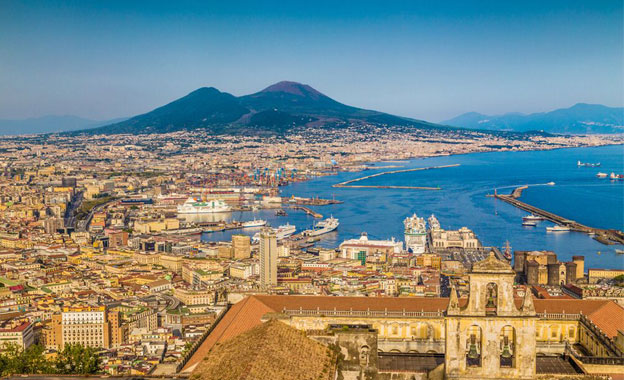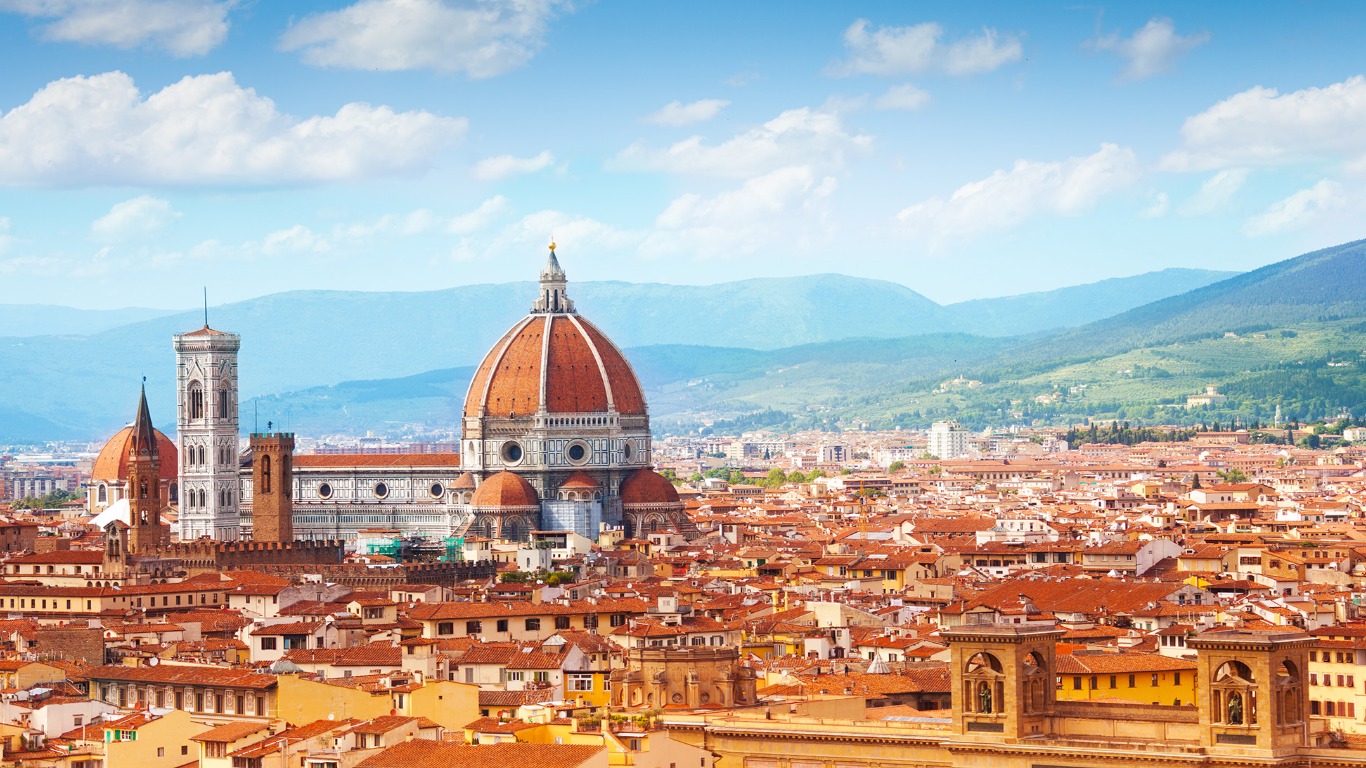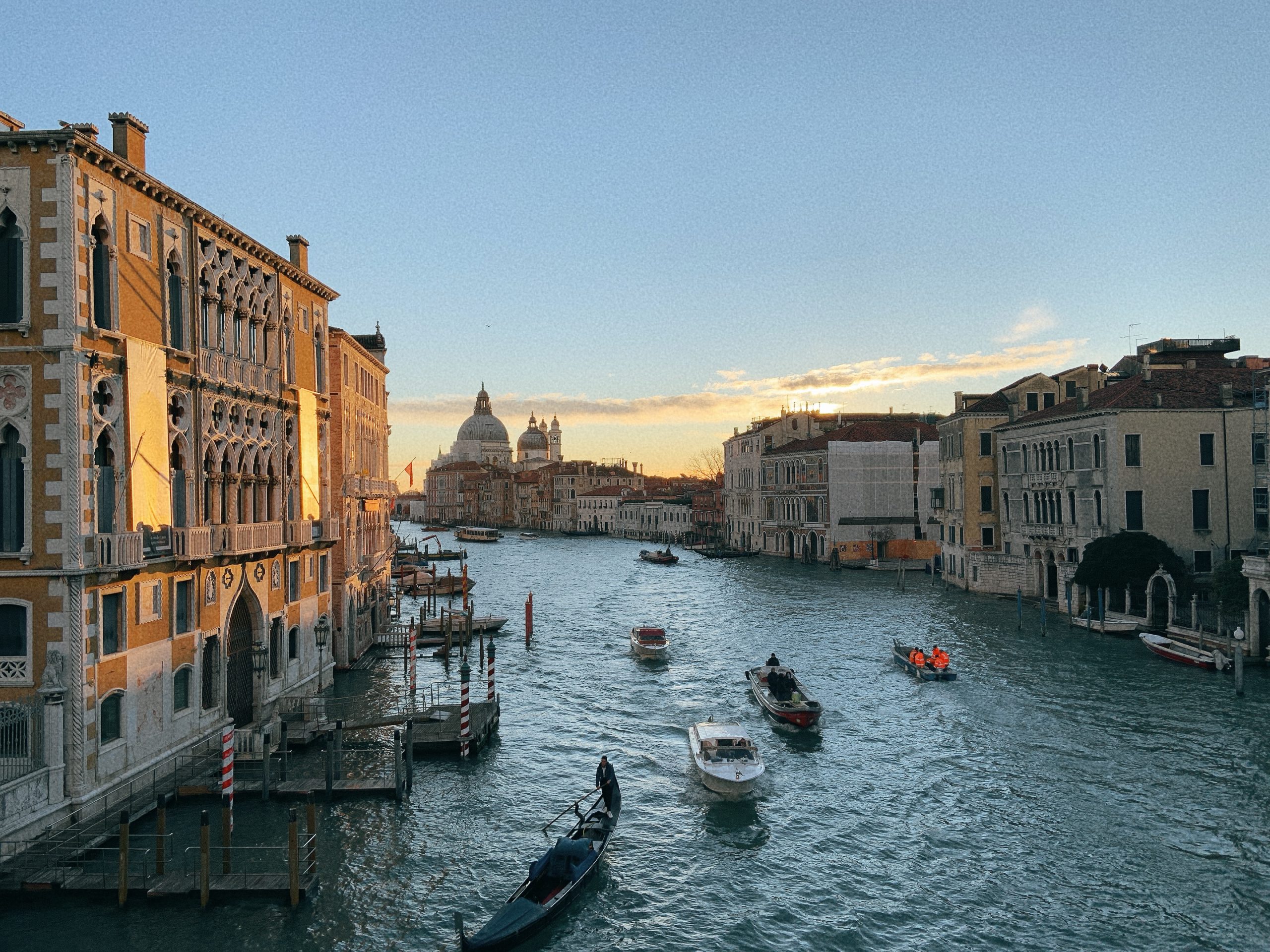

Naples is a holiday destination in its own right. It’s an ancient city that will dazzle you with its outstanding position on the coast affording commanding views over Mount Vesuvius and Capri – making it the lucky subject of unforgettable fiery sunsets. Then there’s the food – from family-run trattorias to world-famous pizzerias – served with a rich side of history and culture, proving there’s far more to this Italian city than meets the eye.

Duomo di Santa Maria Assunta
This is the main church of Naples; it was built in the 14th century on the foundations of two Christian basilicas whose traces are still clearly visible in the architecture of the building.

It is commonly known as the Duomo di San Gennaro, the city’s patron saint, about whom there is an important legend. A sample of St Januarius’ dried blood is kept in a sealed glass and traditionally liquefies three times a year: on Sept. 19, Dec. 16 and the Saturday before the first Sunday of May. If the blood fails to liquefy on any of these dates, legend has it that can be a premonition of evil.



Naples Archaeological Museum

The Naples National Archaeological Museum (Museo Archeologico Nazionale di Napoli) holds a comprehensive collection of Ancient Egyptian, Greek and Roman artefacts, including most of the pieces found in Pompeii, Herculaneum and Stabiae, and is often described as the world’s finest collection of Graeco-Roman artefacts.

It is one of the world’s greatest museums. Whilst it’s more than worth planning a trip to Naples just to visit this extraordinary museum, it’s just the tip of the iceberg in this most authentic and vibrant of cities. Located at the top of bustling Via Toledo, you can’t miss the bright pink-hued edifice! Packed with magnificent ancient artworks and antiquities in a stunning neoclassical building of echoing halls, sweeping staircases and soaring ceilings, the Museo Archeologico Nazionale di Napoli is definitely worth checking out when you are in Naples.


One of the most remarkable and complex ancient sculptures ever carved, the massive group known as the Farnese Bull depicts the dramatic moment in Greek mythology when the sons of Antiope murder her pitiless and longtime persecutor Dirce, wife of the ruler of Thebes. Enraged at her mistreatment of their mother, the half-divine Amphion and Zethus (products of an ill-fated tryst between Antiope and Zeus) tie Dirce to the horns of a raging bull, who will dash her to pieces. The sculpture freezes the narrative at the high-point of the action: the boys industriously wind ropes around the struggling bull and their helpless victim, who raises her arms in doomed supplication. Behind the bull Antiope herself gazes impassively on, whilst an excited dog adds some levity to the dark tale.

Under the Egyptian collection, there is a display of 18-century fakes, with antique furnishings of the early exhibit designs, 19-century casts of Egyptian monuments – whose originals are now kept in the Egyptian Museum of Cairo – and a gigantic reproduction of a painting by Paolo Vetri (Enna 1855 – Naples 1937), titled Museum (1875) and inspired by Giuseppe Fiorelli’s installation in the post-unification period (1864-1866). It is like walking into a movie scene set in Egypt and you can even check out the tomb of a mummy.

With 2,500 objects, the museum has one of the largest collection of Egyptian artifacts in Italy after the Turin, Florence and Bologna ones. It is made up primarily of works from two private collections, assembled by Cardinal Stefano Borgia in the second half of the 18th century, and Picchianti in the first years of the 19th.


Few sculptures capture the dynamic athleticism of the classical world’s sporting heritage than these runners recovered from the luxurious Villa dei Papiri in Herculaneum. 1st-century-BC copies of 4th-century BC Greek originals, the athletes seem poised to spring into action in answer to the starter’s call. Runners such as these took centre stage in the ancient Panhellenic Olympics’ flagship event, the stadion, whose victor gained the honour of lighting the Olympic flame for the subsequent games.

Galleria Umberto e Saint Carlo theatre

Galleria Umberto is a public shopping gallery in Naples. It is located directly across from the San Carlo opera house. The San Carlo is the oldest continuously active venue for public opera in the world, opening in 1737, decades before both the Milan’s La Scala and Venice’s La Fenice theatres.
Castel dell’Ovo
Castel dell’Ovo is the oldest fortification in the city, named after the magical egg that supposedly gives the castle its structural fortitude. Down the road is its younger, medieval brother, Castel Nuovo, an equally impressive feat of engineering – albeit one that lacks in the mythical egg department.

Eat: L’antica Pizzeria da Michele
/7365192594_d4ff73b212_k-5935b1995f9b589eb429a3b0.jpg?w=640&ssl=1)
This is one of the oldest and best pizzerias in Naples. Founded in 1870, Da Michele issues numbered tickets to diners to ensure that the restaurant doesn’t get too busy. It doesn’t take long to make your choice: the only two pizzas served are the marinara (seafood) and margherita (tomato and mozzarella). Open 10am-11pm.


